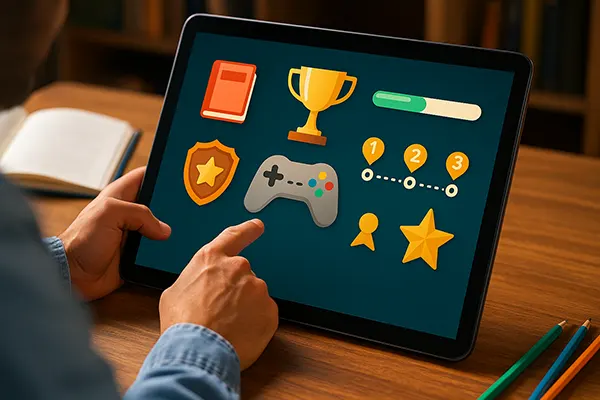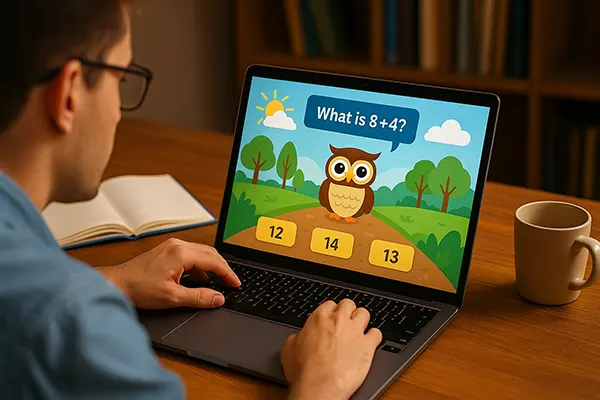
Gamification in Learning: How to Turn Routine into Play
Gamification has become one of the most effective ways to increase motivation and engagement in education. By integrating elements of play into traditional learning processes, both schools and businesses can transform repetitive tasks into enjoyable experiences. This approach has been widely implemented in 2025 across digital classrooms, online courses, and corporate training programmes, helping learners to stay focused while achieving better results.
What Is Gamification in Education?
Gamification in education refers to the application of game-like elements in learning environments. These elements can include points, badges, leaderboards, levels, and story-based challenges. The primary purpose is to boost learner engagement, improve retention of knowledge, and provide an interactive approach to education.
For example, language learning apps often use progress bars and streak counters to encourage daily practice. Corporate training platforms may apply role-playing scenarios, where employees solve simulated challenges that mirror real-life tasks. These mechanics give learners a sense of progression and achievement, making them more likely to continue.
In 2025, gamification is no longer considered a trend but an established tool in education. It complements traditional teaching methods by offering interactive features that address the attention span challenges of the digital age. Many studies show that gamified learning environments can increase completion rates by up to 50% compared to traditional methods.
Psychological Mechanisms of Gamification
Gamification works by stimulating reward systems in the brain. Each achievement, whether in the form of points or unlocking a new level, activates dopamine release, which strengthens motivation. This creates a cycle where learners want to return and continue progressing.
Another key aspect is the element of competition and collaboration. Leaderboards and group challenges encourage social interaction, which further increases commitment. Learners not only strive for personal growth but also want to compare results with peers or colleagues.
Finally, gamification provides immediate feedback. Instead of waiting for test results, learners instantly see their progress, making the process more transparent and encouraging continuous improvement. This instant reward system helps learners correct mistakes in real time and reinforces correct behaviour.
Practical Examples of Gamified Learning
Gamification has found applications in schools, universities, and corporate environments. Educational institutions use interactive apps to help children learn mathematics, science, and foreign languages. Instead of repetitive drills, students participate in quests, solve puzzles, and collect rewards for completed tasks.
Universities adopt gamification to motivate students in online courses. By earning badges and certificates, students feel recognised for their efforts and achievements. This recognition is especially important in distance learning, where direct interaction with teachers is limited.
In companies, gamification is used for onboarding and skill development. New employees can complete missions and unlock levels as they acquire necessary knowledge about corporate policies and processes. This approach makes training less formal and more dynamic, helping staff to integrate faster.
Modern Tools and Platforms for Gamification
In 2025, there are dozens of digital tools that allow educators and trainers to integrate gamification without requiring programming skills. Platforms like Classcraft, Kahoot!, and Duolingo are among the most widely recognised, offering a range of ready-to-use game mechanics.
For corporate training, tools such as EdApp and TalentLMS provide gamification features including quizzes, scoring systems, and progress tracking. These systems not only engage learners but also generate detailed analytics for managers, helping to assess the effectiveness of training programmes.
Virtual reality (VR) and augmented reality (AR) have also strengthened gamification. Learners can now participate in immersive scenarios, such as exploring historical sites in VR history classes or conducting virtual experiments in science subjects. This adds a strong experiential dimension to education.

Benefits and Challenges of Gamification
The main advantage of gamification is higher learner engagement. It makes education interactive, enjoyable, and structured in a way that sustains motivation. Learners often show improved performance because the system rewards consistent effort rather than one-time results.
Gamification also enhances knowledge retention. The use of repeated challenges and feedback loops ensures that learners remember material for longer. This method is particularly effective for skill-based training, where practice and repetition are critical.
However, gamification is not free from challenges. Some educators worry that too much focus on rewards may overshadow intrinsic motivation. There is also the risk of learners becoming discouraged if game mechanics are poorly designed or overly competitive. Therefore, balance and thoughtful implementation are essential.
Future of Gamified Education
The future of gamification lies in personalisation. Artificial intelligence now allows systems to adapt challenges to individual learner profiles, providing tailored experiences. This ensures that learners remain engaged without feeling either overwhelmed or underchallenged.
Integration with wearable devices is another emerging trend. Fitness trackers and smartwatches can be used in physical education or wellness programmes, turning daily activities into measurable goals that feed into gamified systems.
Overall, gamification will continue to evolve as an integral part of education in 2025 and beyond. Its success depends not only on technology but also on the creativity of educators in designing experiences that genuinely motivate and inspire learners.





